This post may contain affiliate links. For more information, please see our affiliate policy.
Learn How to Peel Peaches, an easy technique for removing the skin. Then slice or dice the freshly peeled peaches for cobblers, crisps, jams, and other recipes.
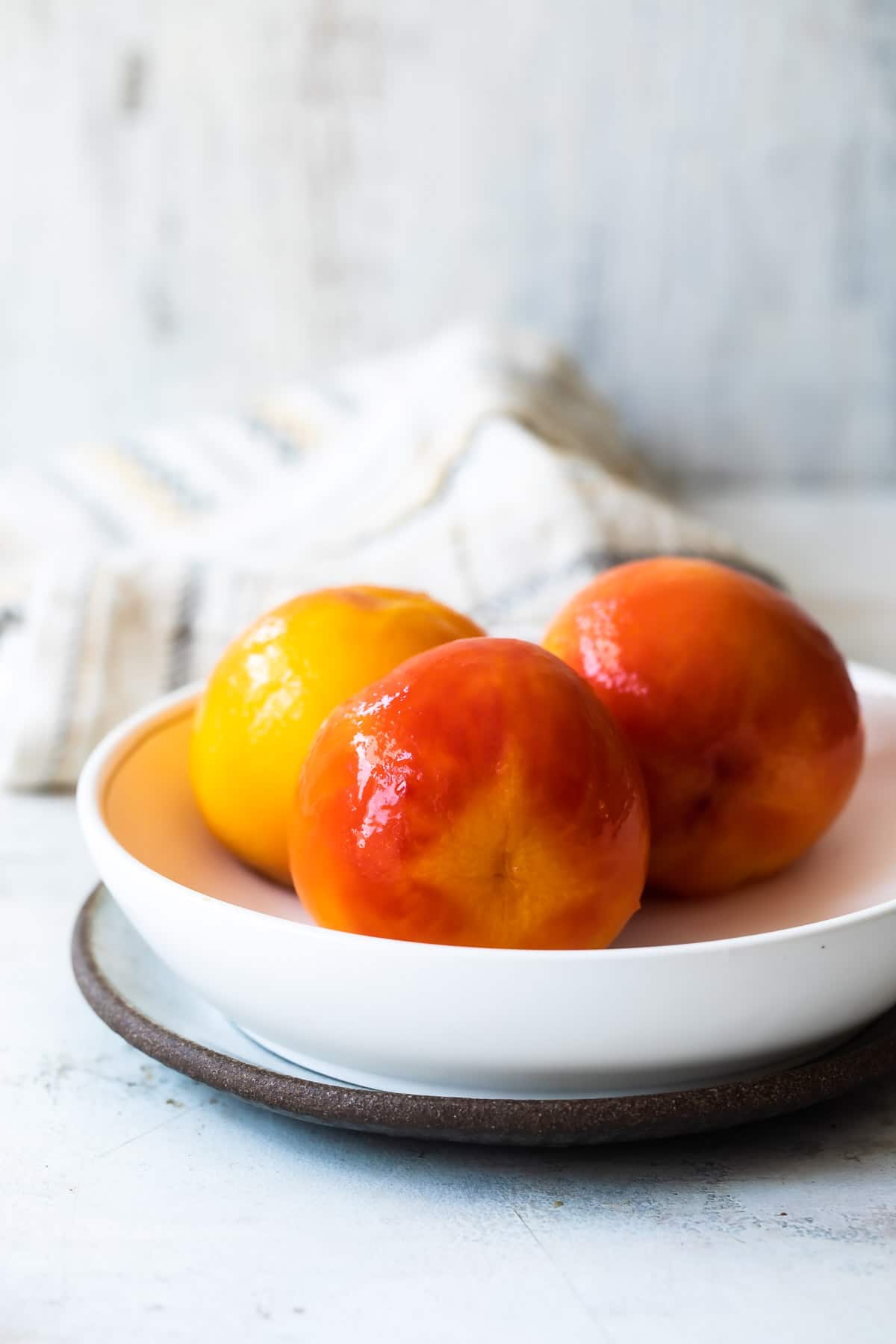
Peeling peaches is a necessary step for the proper texture in your homemade canned fruit or its future usage in cobblers, crisps, and crumbles. Luckily, it’s easy to do with just a paring knife and some boiling water.
You start by making an X in the bottom of each peach. This is called scoring, and we do it when peeling tomatoes, too. This little slice helps the skin start o pull away once it’s submerged in boiling water.
Finish everything up with a dip in an ice bath to stop the peaches from cooking. And that’s it! Pit, slice, and dice as desired.
Table of Contents
Tutorial notes
- Peaches: These luscious stone fruits (named for the pit inside) are generally in season from June to October with the best fruits coming at the height of summer.
- Colors: The two main colors of flesh are yellow peaches and white peaches, the former being more acidic and the latter being sweeter. There are also donut peaches (white in color and flat in shape resembling a donut) and nectarines, a type of peach without the fuzz that can be yellow or white.
- Buying: Looking for peaches that are heavy for their size and soft but not mushy. They should have a fresh, peachy smell.
- Ripening: Sometimes peaches arrive at grocery stores unripened from long transit. You can easily ripen them on the counter in a paper bag. Place a paper bag on its side, then arrange the peaches in a single layer stem side down. The peaches should not be touching each other. Close the bag and check the peaches every 24 hours.
- Storing: Store ripe peaches in the refrigerator to prevent them from ripening further. They will last a few days but will slowly start to dry out, so it’s best to eat them as soon as possible.
Step-by-step instructions
- Bring a large pot of water to boil. Set a large bowl of ice water nearby. Score the blossom end (bottom) of each peach with an X.
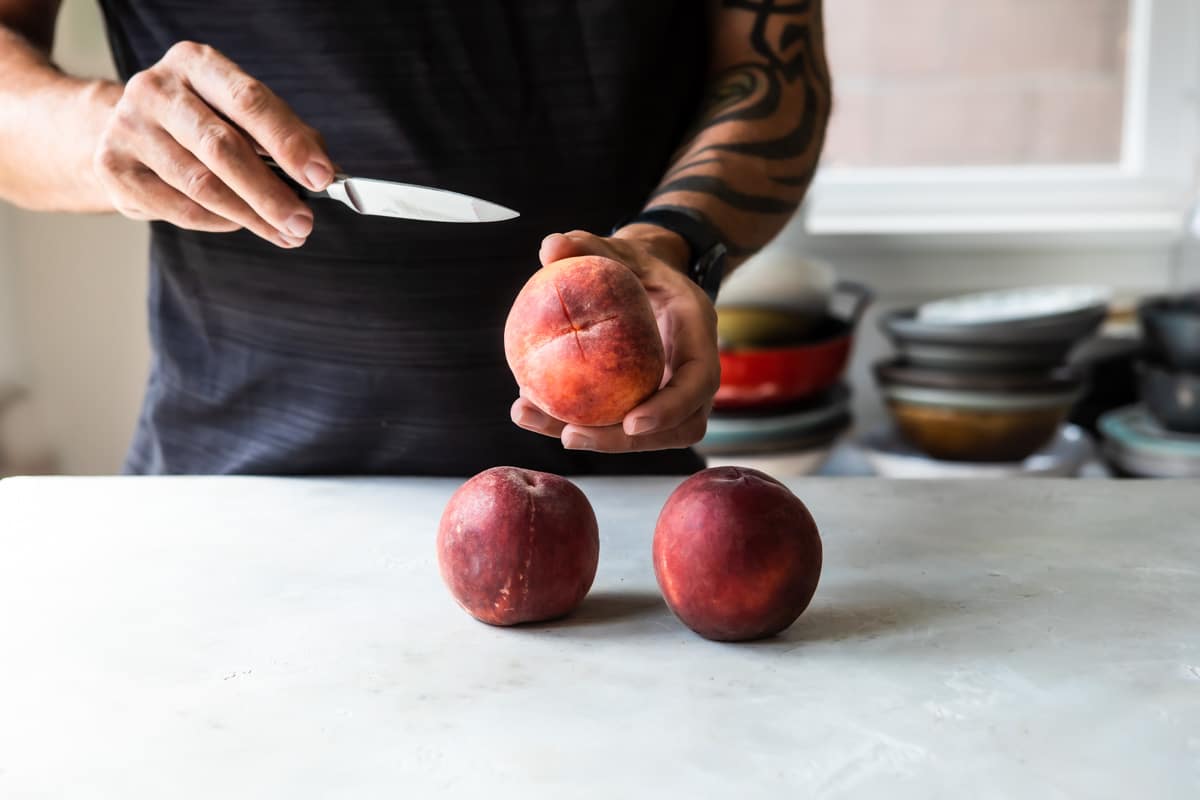
- Working with a few peaches at a time, submerge in boiling water just until the skins pull back and wrinkle, about 30 to 40 seconds.
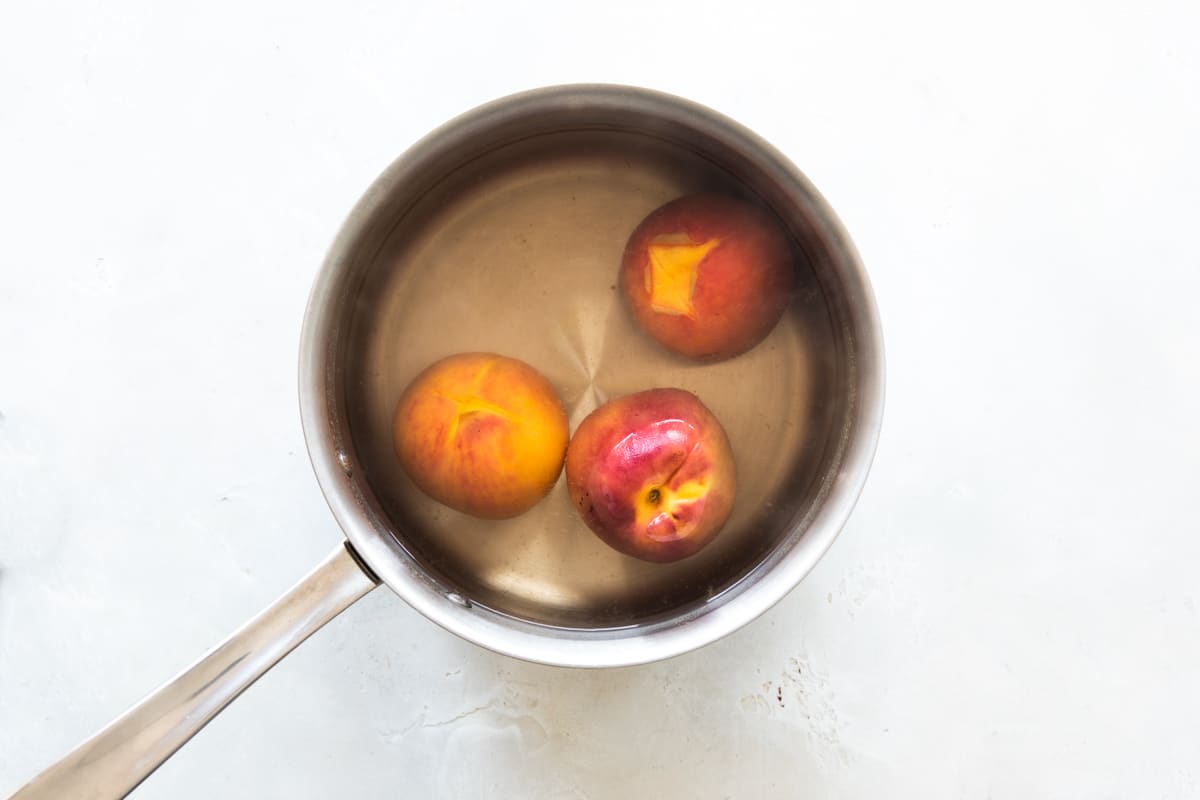
- Using a slotted spoon or strainer, immediately remove the peaches and plunge into an ice bath to stop the cooking.
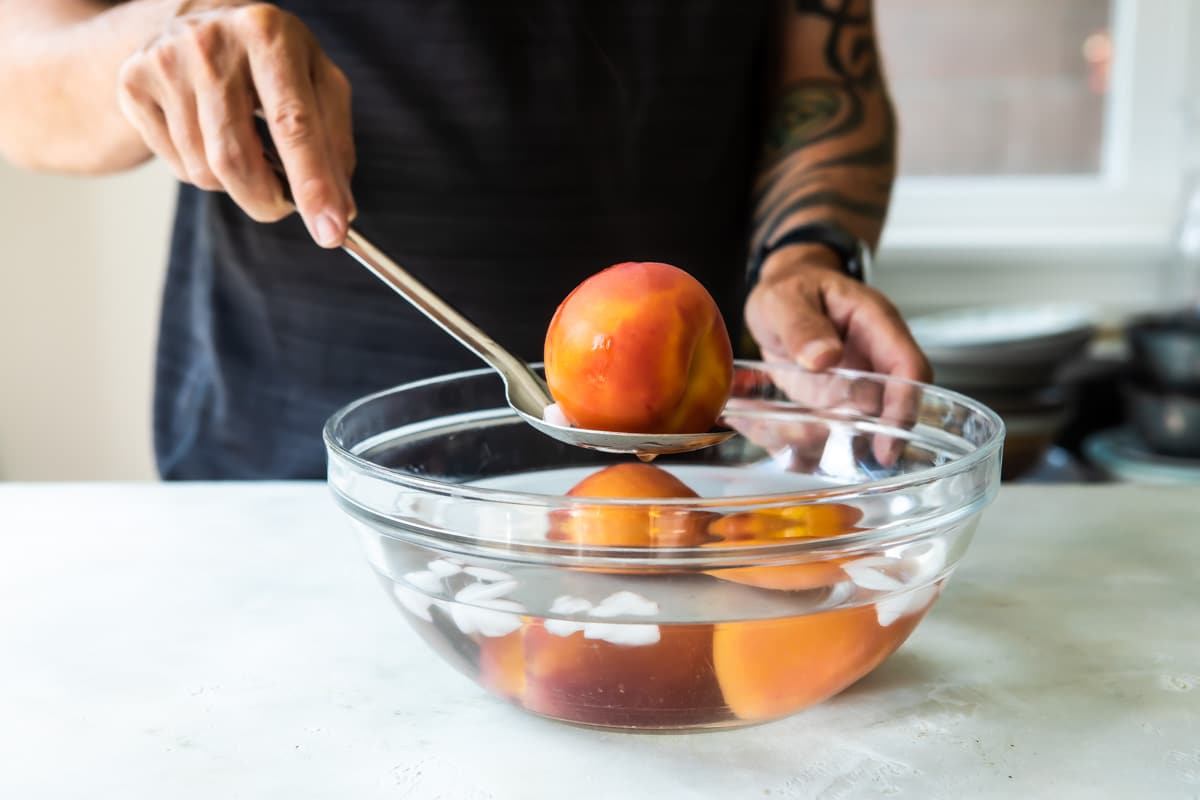
- Once the peaches have cooled, you should easily be able to remove the skin with your fingers or a paring knife.
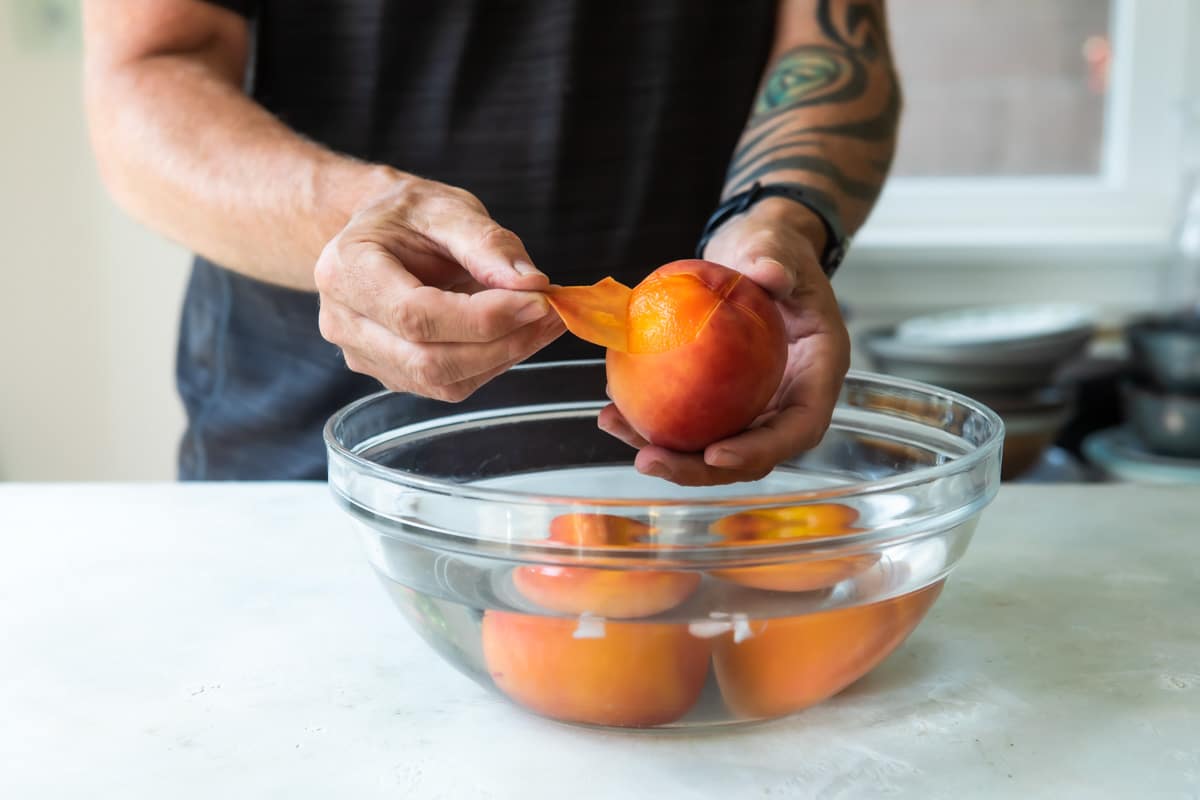
Recipe tips and variations
- Yield: 3 pound of peaches, peeled and sliced or diced, will yield about 4 cups peaches, enough for Peach Cobbler or to fill two pint-sized Mason jars.
- Storage: Store peeled peaches in the refrigerator for up to 4 days.
- Freezer: To freeze slices individually, arrange peach slices on trays or plates and freeze until solid. Then, transfer to freezer-safe bags, label, date, and freeze up to 1 year. Peaches can also be frozen in containers instead of individually; thaw overnight in the refrigerator before using.
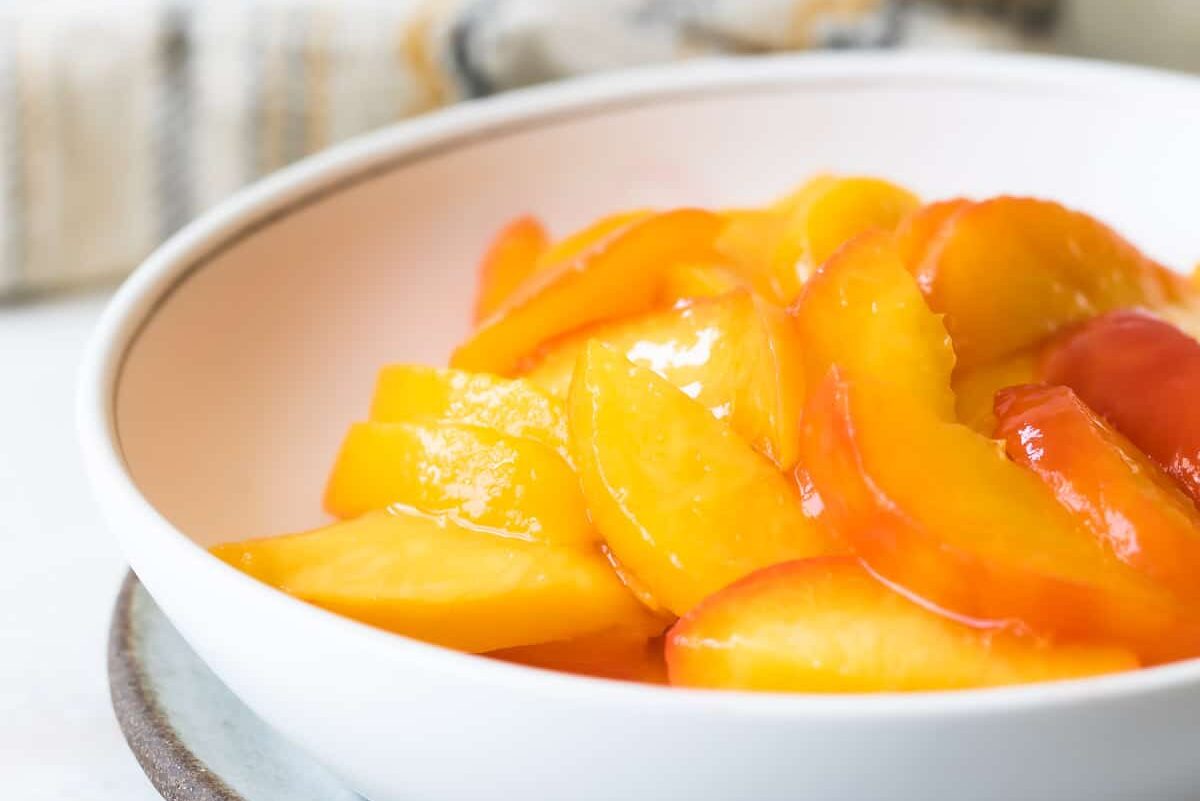
Recipe FAQs
Peaches are divided into two groups: Freestone and Clingstone. Freestone peaches detach easily from the pit and are most common for baking and eating out of hand. Clingstone peaches are harder to detach from the pit and are more often used in canning.
You can easily ripen them on the counter in a paper bag. Place a paper bag on its side, then arrange the peaches in a single layer stem side down. The peaches should not be touching each other. Close the bag and check the peaches every 24 hours.
More peach recipes
Cocktail Recipes
Peach Bellini Recipe
Drink Recipes
Moscato Sangria
Salad Recipes
Burrata Salad
Fruit Dessert Recipes
Peach Crisp
Join Us
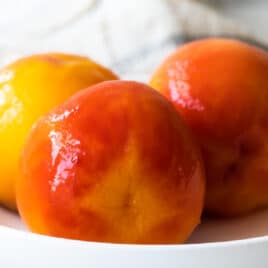
How to Peel Peaches
Ingredients
- 3 pounds peaches (see note 1)
Instructions
- Bring a large pot of water to boil. Set a large bowl of ice water nearby. Score the blossom end (bottom) of each peach with an X.
- Working with a few peaches at a time, submerge in boiling water just until the skins pull back and wrinkle, about 30 to 40 seconds.
- Using a slotted spoon or strainer, immediately remove the peaches and plunge into an ice bath to stop the cooking.
- Once the peaches have cooled, you should easily be able to remove the skin with your fingers or a paring knife.
Notes
- Peaches: These luscious stone fruits (named for the pit inside) are generally in season from June to October with the best fruits coming at the height of summer.
- Colors: The two main colors of flesh are yellow peaches and white peaches, the former being more acidic and the latter being sweeter. There are also donut peaches (white in color and flat in shape resembling a donut) and nectarines, a type of peach without the fuzz that can be yellow or white.
- Buying: Looking for peaches that are heavy for their size and soft but not mushy. They should have a fresh, peachy smell.
- Ripening: Sometimes peaches arrive at grocery stores unripened from long transit. You can easily ripen them on the counter in a paper bag. Place a paper bag on its side, then arrange the peaches in a single layer stem side down. The peaches should not be touching each other. Close the bag and check the peaches every 24 hours.
- Storing: Store ripe peaches in the refrigerator to prevent them from ripening further. They will last a few days but will slowly start to dry out, so it’s best to eat them as soon as possible.
Nutrition
Meggan Hill is a classically-trained chef and professional writer. Her meticulously-tested recipes and detailed tutorials bring confidence and success to home cooks everywhere. Meggan has been featured on NPR, HuffPost, FoxNews, LA Times, and more.


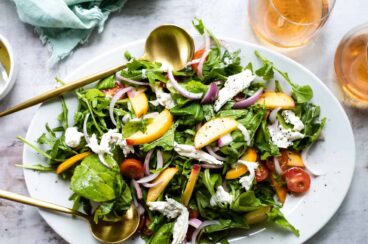
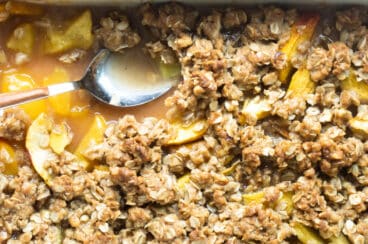
The easiest way to peel peaches is to use a serrated peeler like the one from oxo. It peels a peach as easily as it peels an apple.
Hi Sharon, thank you for sharing! Take care! – Meggan